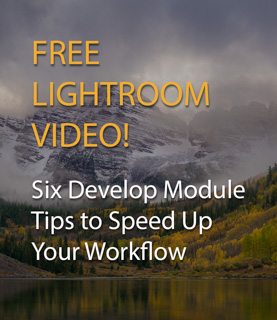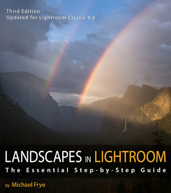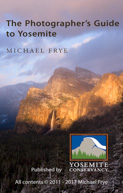In the Moment:
Michael Frye's Landscape Photography Blog
by Michael Frye | Jun 21, 2022 | Light and Weather
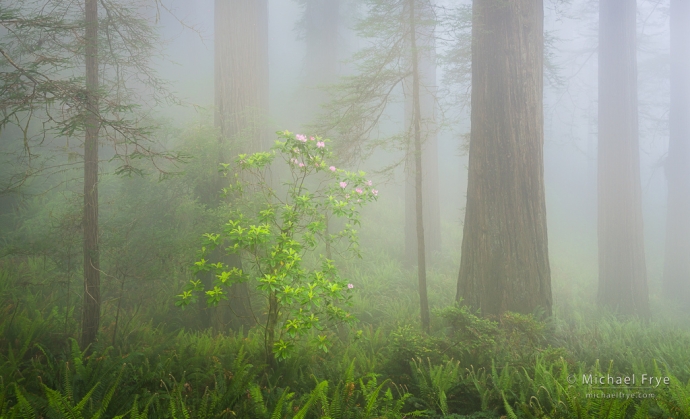
Redwoods and rhododendrons in fog, northern California. Some dense coastal fog helped simplify this forest scene and add a soft, ethereal mood. 35mm, 1.5 seconds at f/16, ISO 200.
I half-jokingly refer to our redwoods workshop as the “Chasing Fog” workshop. The northern coast of California is definitely fog-prone (though there are never any guarantees). And fog can add so much to photographs of the redwood forests, or scenes of the meadows, rivers, or coast, so I try to take advantage of fog whenever and wherever I find it.
But fog is also fickle stuff. We’ve been going up to this corner of California every year since 2011 (except 2020), and every year I see the fog behave in new ways. Sometimes the fog will get into a pattern for a few days in a row, but inevitably that pattern gets disrupted by something – high pressure, low pressure, a cold front, a wind shift – and the pattern changes, or the fog disappears completely.
(more…)
by Michael Frye | Jun 15, 2022 | Announcements
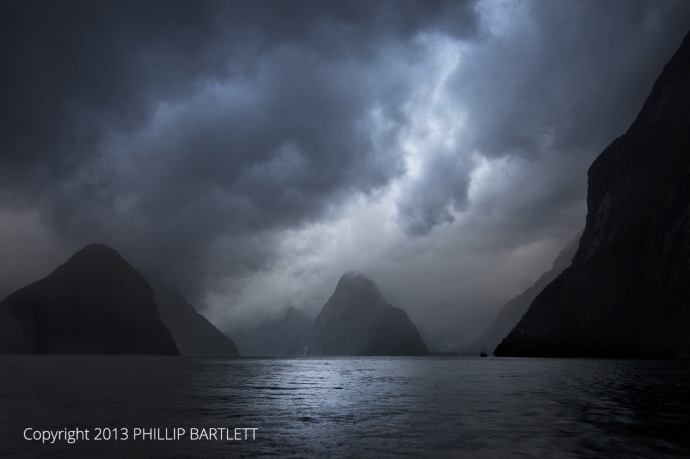
Milford Sound, by Phillip Bartlett. I love the moodiness of this photo by my co-instructor – very Lord of the Rings.
I’m so looking forward to going to New Zealand!
I remember seeing a National Geographic article about New Zealand when I was growing up, with a captivating cover photo of Milford Sound. It seemed like such an exotic, even mystical place, with mountains plunging into the sea, rainforests, peaks draped with glaciers, flightless birds, and on and on. I dreamed of going there.
And then I saw Peter Jackson’s Lord of the Rings movies, famously filmed in New Zealand. The landscapes fit so perfectly with the mythical, other-worldly realm of these stories. That made me want to go even more.
So I’m thrilled to finally get that chance this October, when I’ll be co-leading a photography expedition to South Island for Visionary Wild. My co-instructor is Phillip Bartlett, a fantastic photographer and New Zealand native, who has scoured the area to find lots of beautiful, lesser-known, but highly-photogenic locations, and put together an amazing itinerary for this trip.
(more…)
by Michael Frye | Jun 12, 2022 | Composition, Light and Weather
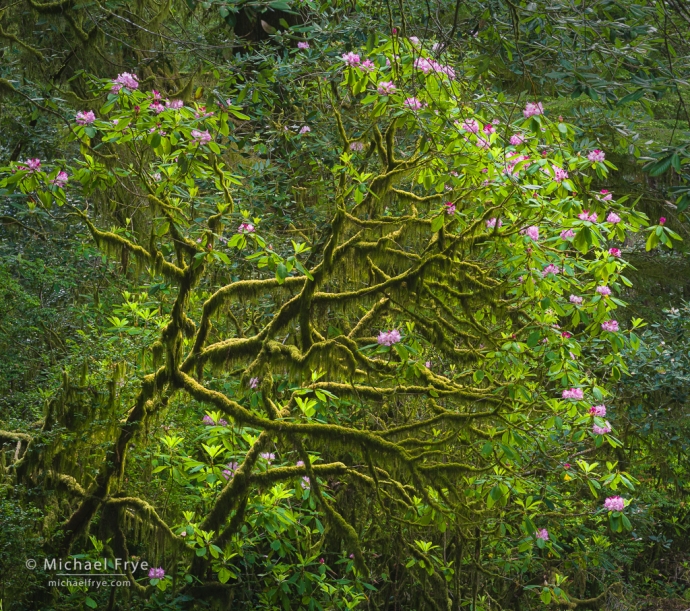
Lichen-covered rhododendron, Northern California. This was an overcast day, and the soft, even light helped simplify this complex scene, and emphasize the color contrasts between the pink rhododendrons and various shades of green. I used a long lens to isolate the rhododendron against a dark, leafy background. Moving closer with a shorter lens would have required looking up at the top of the tree, forcing me to include bright, distracting patches of sky. 159mm, 1/4 sec. at f/16, ISO 800, polarizing filter to cut reflections on the leaves.
Forests can be challenging to photograph. They’re beautiful, but cluttered, and often visually chaotic.
Creating order out of that chaos requires finding ways to simplify things. That’s one of the reasons fog is so helpful for these scenes: it obscures the background, reducing the clutter. (It also lends a wonderful atmosphere to the photographs.)
During our recent workshop in the redwoods we did get some fog, and even sunbeams. I’m sure I’ll post some of those photos down the road.
But there were also many occasions before, during, and after the workshop when we didn’t have fog, and I was photographing forests in soft light, or with sunlight filtering through the trees. What then?
(more…)
by Michael Frye | May 23, 2022 | Light and Weather, Travels and Stories
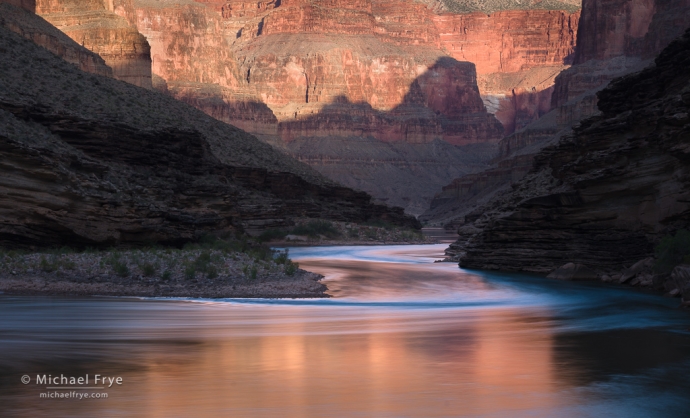
Winding river, Grand Canyon NP, Arizona. 78mm, 20 seconds at f/11, ISO 100, 10-stop ND filter.
In 1540 Spanish Conquistadors became the first Europeans to ever see the Grand Canyon. They greatly underestimated the scale of what they were seeing. Looking down from the rim they thought the river was six feet wide (the average width is actually 300 feet). Rocks that they thought were as tall as a man turned out to be 300 feet high.
(more…)
by Michael Frye | May 19, 2022 | Light and Weather
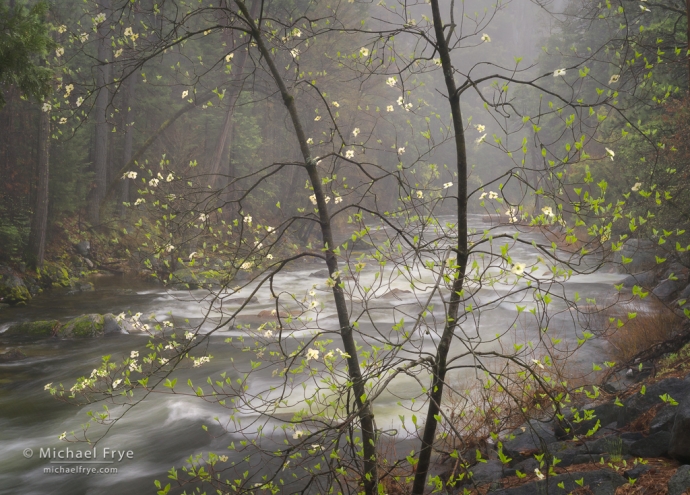
Dogwood, mist, and the Merced River, Yosemite NP, California. 50mm, 1 sec. at f/16, ISO 800.
On a stormy afternoon in April, before we left for the Grand Canyon, Claudia and I drove up to Yosemite Valley and found the dogwoods beginning to bloom.
They were just coming out. When the dogwood blossoms first emerge their petals (actually bracts) are green, then change to white. On that April day many were still green, but maybe half had turned white already. That was an early appearance for dogwoods – April 11th. But with such a dry winter and spring this precocious bloom wasn’t all that surprising.
(more…)
by Michael Frye | May 17, 2022 | Night Photography, Travels and Stories
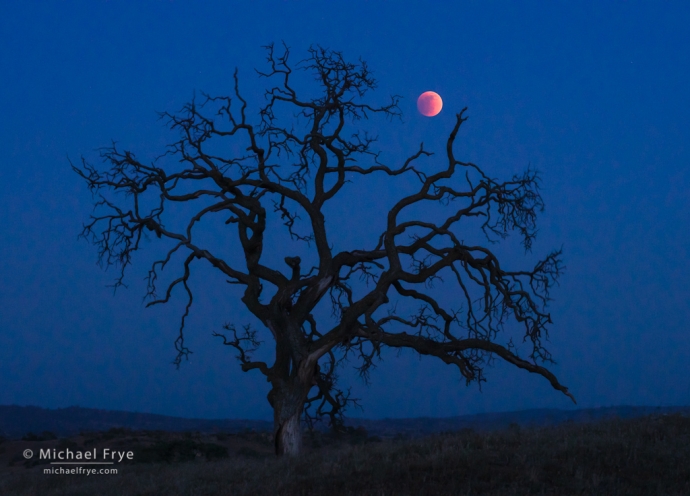
Blue oak and eclipsed moon, Sierra Nevada foothills, California. 122mm, 1 second at f/11, ISO 6400.
On Sunday a total lunar eclipse was visible in many parts of the world, including our corner of California in the Sierra Nevada.
I’ve photographed many lunar eclipses before. I like capturing sequences of the moon above a landscape in various eclipse stages – if possible. But for this eclipse I couldn’t think of any nearby spot that would add a compelling foreground while looking in the right direction (southeast) for a sequence like that, plus it appeared that clouds might interrupt any attempt at capturing a long eclipse sequence.
Instead, I thought of a lone oak tree in the Sierra foothills that might lend itself to a different treatment: a telephoto view of just the tree and eclipsed moon at dusk. I had photographed this tree before, and it looked like the tree and moon would line up well. Using a long lens would make the moon look larger, plus capturing a single frame like this would require only a brief cloud-free interval to work, while a sequence would need several hours of clear skies.
(more…)
by Michael Frye | May 11, 2022 | Travels and Stories, Vision and Creativity
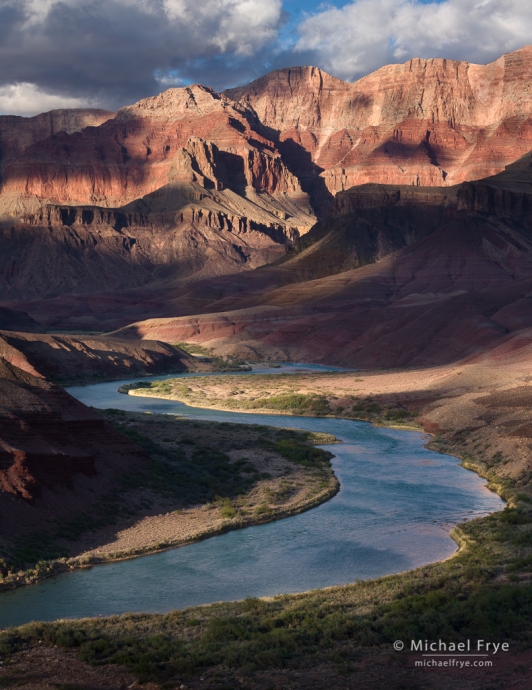
Dappled light along the Colorado River, Grand Canyon National Park. Watching the cloud shadows move across the canyon from this spot was one of the highlights of the trip for me.
Most people make their best photographs of places or subjects they’re familiar with.
In landscape photography, it helps immensely if you know an area well, and know what spots might work best under certain conditions, so you can put yourself in the right place at the right time.
I think it’s also natural and inevitable that we’re going to make our best and most meaningful images when we feel a connection with the subject or place. You can often trace a direct correlation between the depth of that connection and the depth of the imagery. And making those connections takes time.
(more…)
by Michael Frye | May 5, 2022 | Announcements
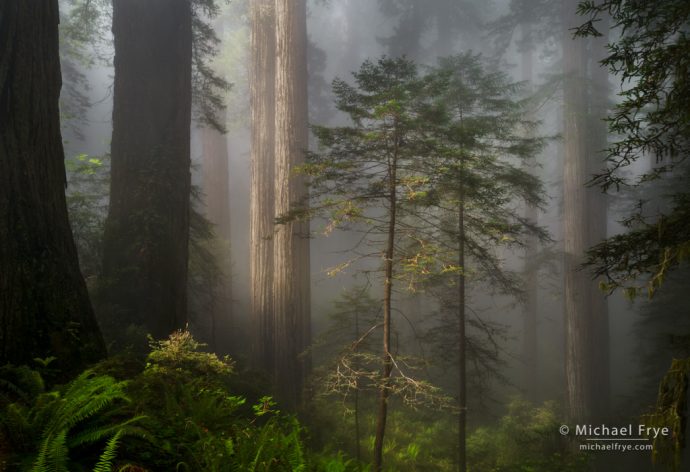
“Twins” – sun breaking through fog in a redwood forest, northern California
A few weeks ago, before rafting down the Grand Canyon, I did an interview with Brenda Petrella for her Outdoor Photography Podcast. I thought Brenda asked a lot of great questions, and I really enjoyed the conversation. We talked about a wide range of topics, including light, my early photography career working at The Ansel Adams Gallery, the difference between style and vision, immersing yourself in nature, and so much more.
Brenda just released the podcast, so you can listen to it on her website, or through all the usual podcast sources like iTunes, Spotify, Stitcher, and so on. I hope you enjoy the interview!
(more…)
by Michael Frye | May 1, 2022 | Travels and Stories, Uncategorized
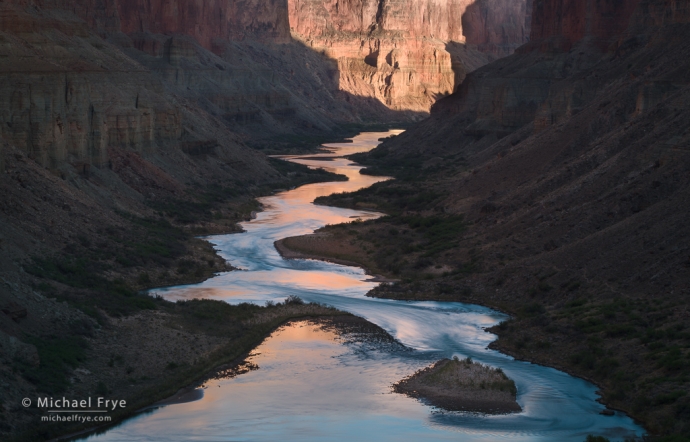
Ribbon of water, Grand Canyon National Park,
Arizona
Claudia and I just emerged from the Grand Canyon on Thursday. What an incredible journey.
This was my second raft trip down the canyon, and it was just as wonderful as I remembered. Maybe even more so. As beautiful as the Grand Canyon is from the rim, the river is the beating heart of the canyon. We were deep in that heart for ten days, getting doused by the river’s (very cold) water in rapids, bathing in it, drinking it (filtered of course), and lulled to sleep at night by the roar of nearby rapids.
What made this trip even more special was the people we shared the journey with, including my amazing co-instructor, Jerry Dodrill, our wonderful guides Ed, Ellen, and Boh, and a super-nice group of photographers, who I’d now call friends for life. We couldn’t have asked for better companions.
(more…)
by Michael Frye | Apr 18, 2022 | Travels and Stories
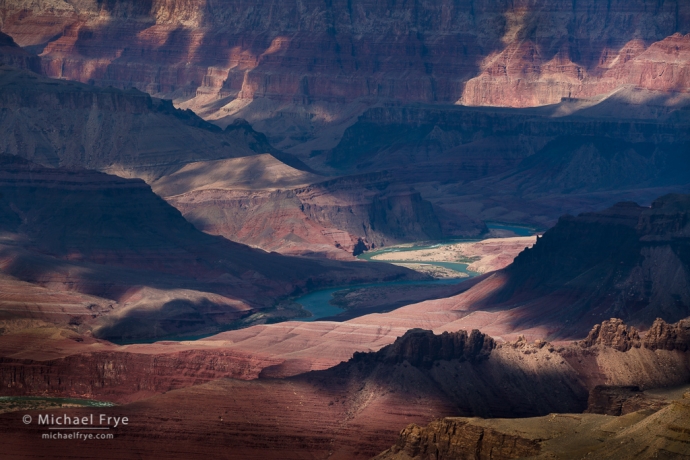
Dappled light, Grand Canyon NP, Arizona
“We are three-quarters of a mile in the depths of the earth, and the great river shrinks to insignificance, as it dashes its angry waves against the walls and cliffs, that rise to the world above; they are but puny ripples, and we but pigmies, running up and down the sands, or lost among the boulders. We have an unknown distance yet to run, an unknown river to explore. What falls there are, we know not; what rocks beset the channel, we know not; what walls rise over the river, we know not.” — John Wesley Powell
Powell wrote those words to describe the challenge facing he and his eight companions as they began their epic journey through the Grand Canyon in 1869. They had already been traveling for two-and-a-half months down the Green and Colorado rivers, through territory that was almost completely unknown to Europeans at the time. They were low on food, their clothes had been worn to rags, and their boats were battered an in constant need of repair. Somehow, Powell and five of the men made it through the Grand Canyon, becoming the first to ever do so – as far as we know. (The three others decided to hike out of the canyon, and were never seen again.)
Of course the Colorado River through the Grand Canyon is well known now. Every mile has been thoroughly explored and mapped. But rafting down the river is still a great adventure.
(more…)











